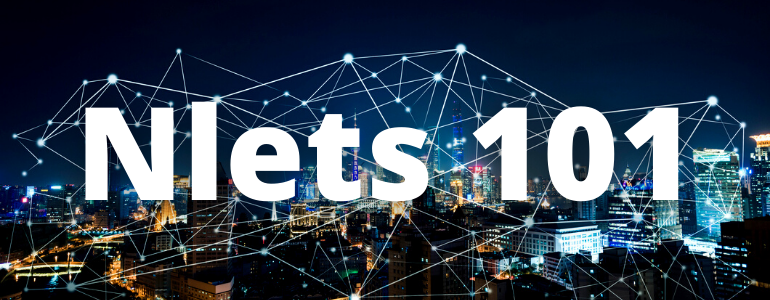
Nlets 101
Though Nlets has been around since 1967, there is still a substantial amount of confusion as to what, exactly, we do. Today, we want to shed some light on the subject and clarify some frequently asked questions to help you understand how we impact the law enforcement community.
1. Our History
In the mid 1960’s, representatives from the 50 U.S. states decided to develop a nationwide, interstate communications system. So, in May of 1967, the LETS – Law Enforcement Telecommunications System was installed in Phoenix, Arizona. We then became the National Law Enforcement Telecommunications System - NLETS. With time and growth of our membership, our name was changed to Nlets – The International Justice & Public Safety Network (but most people just call us Nlets).
Nlets purpose is to connect all 50 U.S. states, the District of Columbia, Puerto Rico, the U.S. Virgin Islands, Guam, and Canada. Nlets also connects all U.S. Federal agencies that have a criminal justice component, and several associate members for the secure exchange of criminal justice data necessary to complete law enforcement, justice, and public safety mission. In other words, Nlets enables criminal justice information to be shared amongst relevant communities in a highly efficient and secure way.
2. NCIC and Nlets: We are partners but not the same!
Nlets is not the same as NCIC. The FBI’s NCIC is a computerized index of criminal justice information. This index of information is populated by agencies that are entering records, such as, wanted persons, missing persons, stolen vehicles, stolen guns, etc. The information is made available to federal, state, and local law enforcement and other criminal justice agencies.
Nlets, on the other hand, is a self-funded, private, not-for-profit corporation that has created dozens of secure partnerships for data exchange. Nlets does not own any of the data that is being used in the criminal justice or public safety realm – it exists solely for the purpose of securely accessing and providing that information for you. We are funded and governed by the 54 lead law enforcement agencies that make up the principal members of Nlets.
3. Nlets Membership
Each state is represented by one individual, known as the Nlets Representative. Additionally, the states are divided into eight regions, each of which elects a chairperson to represent the region on the Nlets Board of Directors (BOD). The BOD consists of the President, First and Second Vice Presidents, and the Regional Chairs. Together, each of these groups of representatives form the Nlets Primary Membership.
4. Nlets at work
So, what does Nlets look like in action? Here is a common scenario where Nlets is used numerous times each day.
Imagine that you are a California driver on your way to Arizona. Since the drive is long and boring, you start to speed and are then pulled over by an Arizona state trooper. Because you are from California, you present your California driver license to the trooper. Since the trooper and dispatch in Arizona do not have direct access to the California Department of Motor Vehicles information, they run an Nlets check to securely access information from California.
To accomplish this, the request is sent to dispatch by way of a Nlets query. Nlets first receives the query from the agency and checks to make sure it is a valid request. This is done by validating the Originating Agency Identifier (ORI - the identification for each agency/terminal that accesses Nlets and NCIC) to make sure the agency that is requesting the information is authorized to receive it. Once the validation is complete, the request is forwarded to the state of record. California receives the request and pulls the information that is needed by the Arizona trooper and sends an automated response back to Nlets. Nlets receives the response from California and then forwards the information back to the dispatcher in Arizona that made the initial request and ultimately the information gets back to the trooper that pulled you over.
While this might sound like a lot of steps, the process is extremely quick, averaging about 1.5 seconds in total. What’s more, this happens all day, every day. In fact, in 2023, Nlets processed over three billion transactions.
If you want to learn more or have deeper questions about what we do, contact training@nlets.org.

